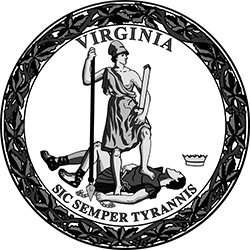The Program-to-Skills Mapping Dashboard allows users to explore the skills taught in academic and non-credit programs across the Commonwealth. Identified skills are based on required course descriptions and other program documents. The tool offers a comprehensive overview of the skills prioritized in Virginia’s higher education institutions. It is a valuable resource for researchers, workforce developers, […]
Improving Virginia’s Career Readiness System: The OECD Survey of Young Adults (Brief #2)
The international Organisation for Economic Co-operation and Development (OECD) recently conducted an in-depth review of career readiness activities in K-12 schools in Virginia. The study is part of the OECD Career Readiness project, which is examining and benchmarking career readiness practices across the globe to help governments, schools, employers, and other stakeholders better prepare students to enter the workforce. The final report was published on December 1, 2023, and is available here. This is the second in a series of briefs based on the report. As part of their study, OECD surveyed young adults about their current education/employment status and their participation in career readiness activities in high school. This brief includes the results of that survey.
Survey Overview
To better understand the relationship between career readiness activities and future education and employment outcomes, OECD surveyed a representative sample of 1,100 Virginians aged 19–26 years old. The sample was restricted to young adults who attended high school (public, private, distance learning, or home school) in Virginia. The survey included 31 questions related to participants’ current education and employment status and their prior experience with career readiness activities during high school. Participants were also asked to provide demographic information. The Appendix at the end of this brief describes the sample in terms of gender, race/ethnicity, socio-economic status (SES), and urbanicity.
Survey Results
Career Progress and Satisfaction
At the time of the survey, 83% of respondents were either employed, in school, or both. The remaining 17% were not in education, employment, or training (NEET). Most participants’ highest completed level of education was high school. Nearly one-quarter of them (24%) had a two- or four-year degree, and an additional 11% were enrolled in a post-secondary program. A full 25% percent had dropped out of a college or university program. The remaining 40% had no experience with post-secondary education.
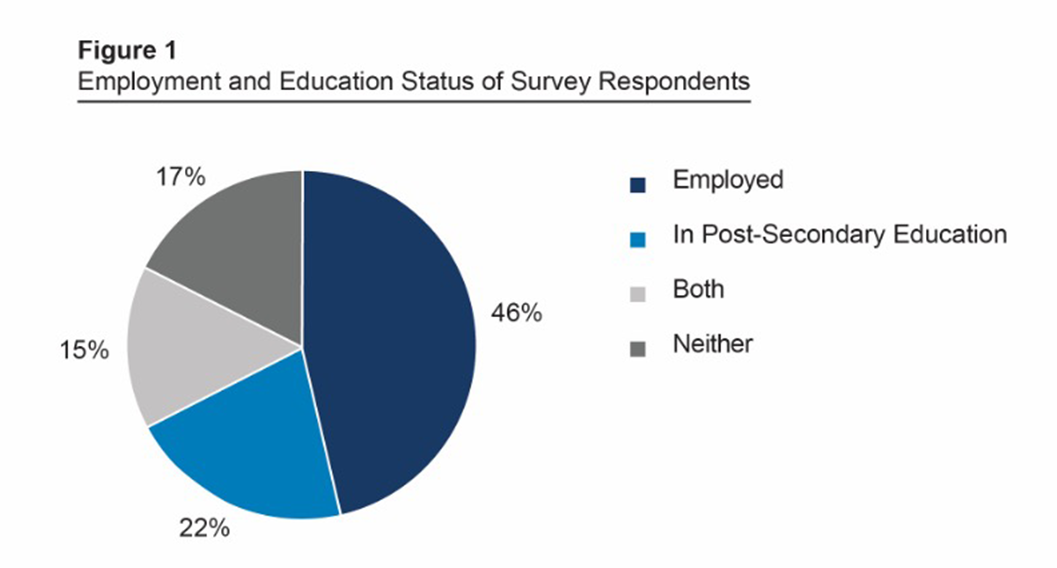
Among respondents who had either completed a degree program or were enrolled in one, 69% pursued postsecondary education to get a better job, and 65% wanted to make more money. The most common reason for dropping out of a program was getting a job (41%). Regardless of whether they were in school or the workforce, most respondents were satisfied with their career progress (74%).
Overall Quality of Career Readiness Preparation in High School
While a majority of participants agreed that high school had helped prepare them for their careers, many felt that their career readiness preparation had been inadequate. One-third of respondents said that high school did not help them decide on the right qualifications to pursue the careers they were interested in, and almost half disagreed with the statement, “Trying hard in high school helped me to get a good job.”
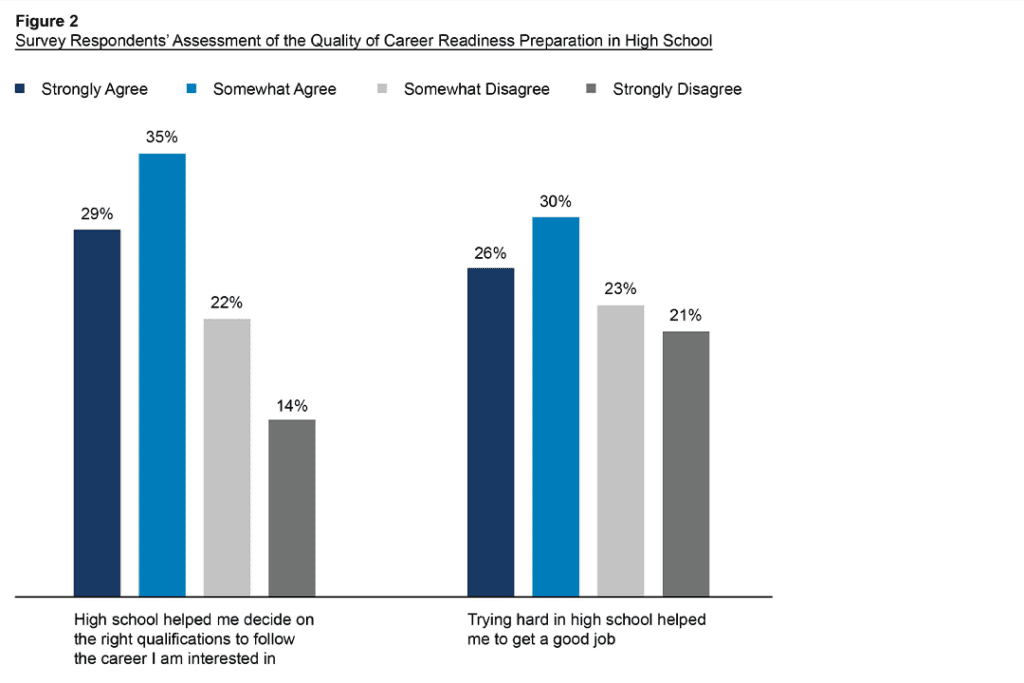
Participation in Career Readiness Activities in High School
Almost all respondents reported participating in at least one career readiness activity in high school. Ninety-nine99% percent participated in at least one career exploration activity, and 91% percent participated in at least one career-experience activity.
Career exploration activities provide students with information about careers and/or teach career readiness skills. They include:
-Speaking to a school advisor
- Attending a job fair
- Visiting a business
- Writing a resume
Career-experiencing activities involve students participating in the world of work. They include:
- Volunteering
- Participating in an internship
- Working at a part-time job
Some career exploration activities were far more common than others. While respondents received a lot of information about careers and higher education during high school, relatively few participated in worksite visits (49%), job shadowing (51%), or vocational programs (57%). A majority of young adults did participate in the workforce in the form of volunteering (71%) or part-time work (69%).
School counselors have many responsibilities, including providing education and career guidance to students. The Virginia Community College System (VCCS) partners with local high schools to provide students access to career coaches, who provide similar services. Nine out of ten survey respondents reported having a counselor or career coach at their school, but some did not find them helpful. Almost one-third of participants with access to a counselor or coach indicated that they did not help guide them to a career or other goals.
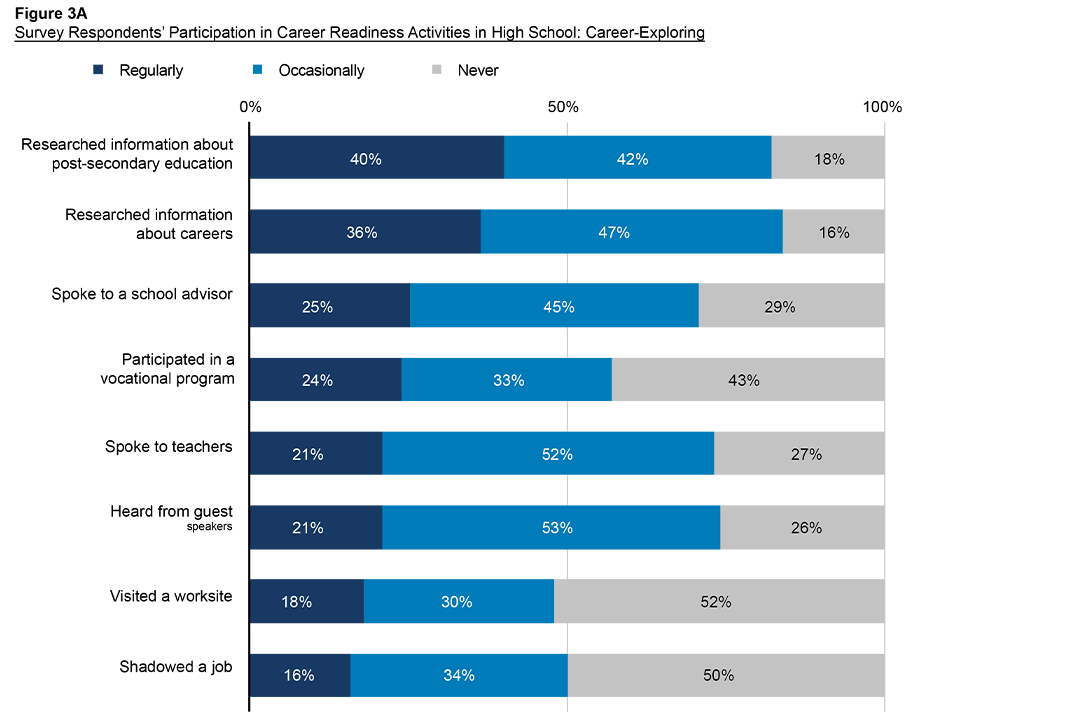


Relationships between Career Readiness Activities and Career and Education Outcomes
Certain career readiness activities may be more effective at improving later education and labor market outcomes. The OECD study includes statistical analyses examining the importance of the frequency and type of activities. These analyses controlled for other factors that could affect participants’ education and career outcomes, including age, gender, socio-economic status, and academic achievement. The results are in line with other OECD studies of the importance of career readiness activities using data from both the United States and other OECD countries.
Overall, respondents who regularly participated in career readiness activities were much more likely to report that high school helped prepare them for their careers. They were also more likely to be employed or in education/training (non-NEET). Respondents who regularly participated in career-experiencing activities (such as part-time work or volunteering in the community) were almost 3.5 times as likely to be non-NEET. Those who regularly participated in career-exploring activities were 1.8 times more likely to be employed or in school. Participating in career-exploring activities was also positively related to degree attainment, even after accounting for a respondent’s age.
Career readiness participation was also related to career satisfaction. Respondents who regularly participated in career-exploring activities or career-experiencing activities were 2.5 and 2.6 times more likely to report that they were satisfied with their careers, respectively. Respondents who regularly participated in an internship in high school were particularly positive about their careers. They were 3.5 times more likely to report that it had been easy to progress in education or work since high school, and they were 4.5 times more likely to be satisfied with their careers compared to those who did not participate or rarely participated in internships.
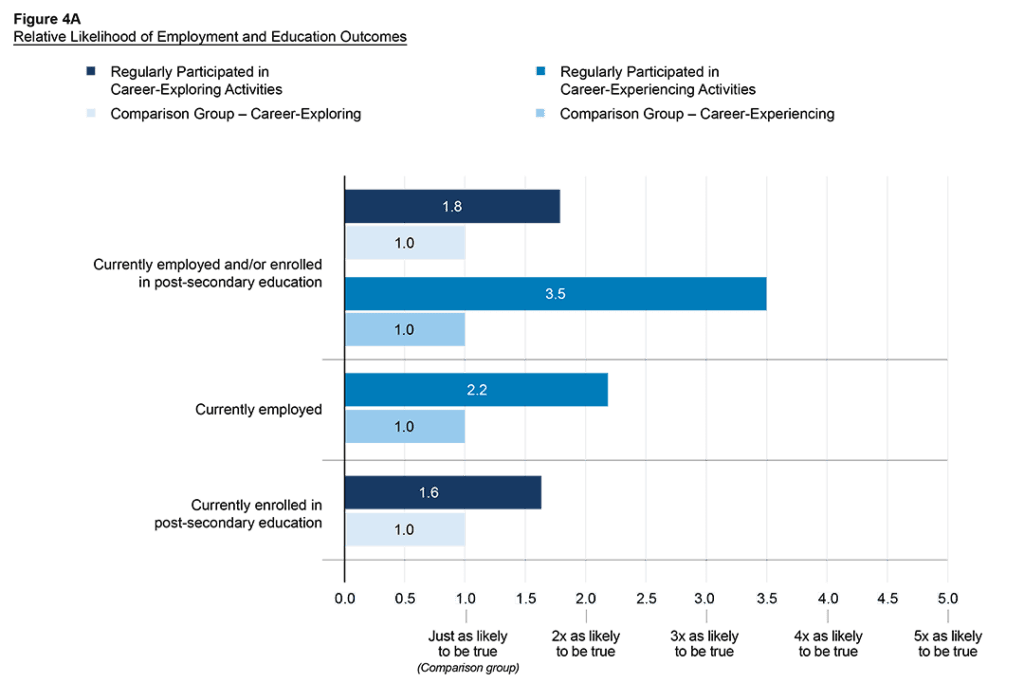
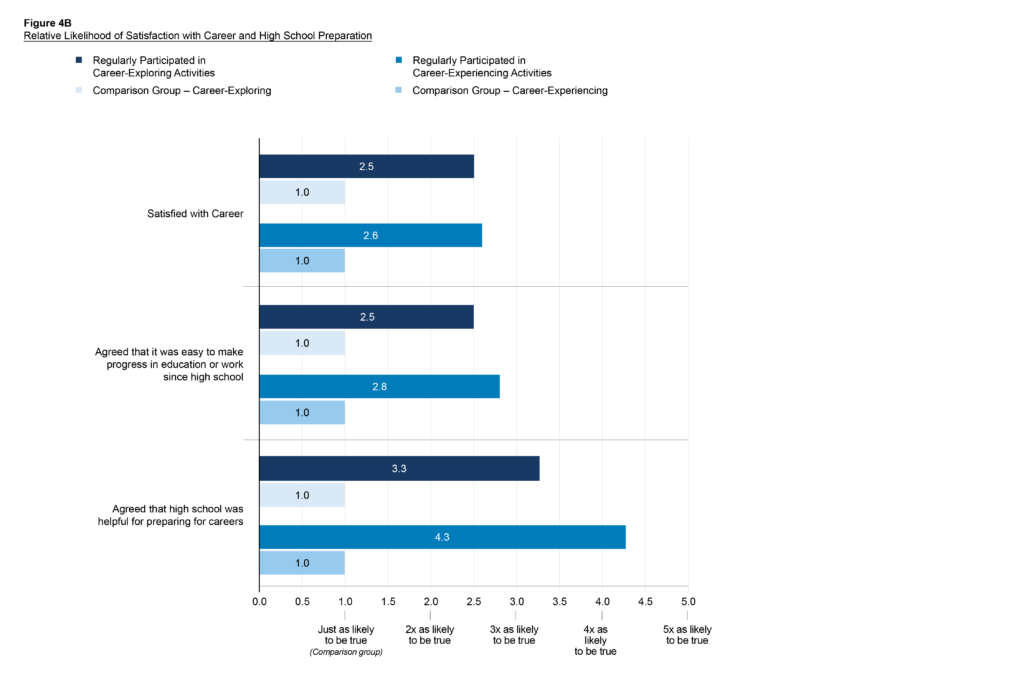
Note: Results compare respondents who regularly participated in career readiness activities to those who never or only occasionally participated. Analyses accounted for other factors that could affect participants’ education and career outcomes. Only statistically significant differences are displayed.
Conclusion
OECD’s survey suggests that almost all young adults in Virginia participated in career readiness activities during high school, but the type, frequency, and quality of activities varies. Certain types of activities (e.g., internships) and more frequent participation are strongly associated with more positive career and education outcomes, but few young adults reported regularly participating in key career readiness activities.
Appendix



